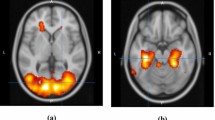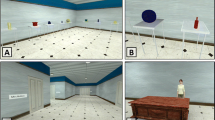Conclusion
Available evidence suggests that human memory and thought are extremely complex and dependent on duration, modality, and brain function. By using unusual modalities and specific visual strategies for remembering and for problem solving it is possible to achieve great success. We should keep this in mind for our educational systems so that students’ non-verbal and other unusual thought processes can be used to increase the potential of human thought. Our present verbally oriented schools should not prevent geniuses with visual or other forms of thinking from achieving their full potential. Indeed, the total thinking power of even an average person can also be expanded.
Similar content being viewed by others
References
Adams, R. D., Fisher, C. M. and Hakim, S. 1965. Symptomatic occult hydrocephalus with “normal” cerebrospinal fluid pressure: A treatable syndrome.New England J. of Med. 273: 117–126.
Barbizet, J. and Cany, E. 1969. A psychometric study of various memory defects associated with cerebral lesions. InThe Pathology of Memory (eds.) G. A. Talland and N. C. Waugh. New York: Academic Press.
Clark, R. 1971.Einstein, The Life and Times. New York: Avon Books.
Einstein, A. 1963. Remark to Shankland.Amer. J. of Physics 31:50.
Einstein, A. 1949. Autobiographical notes. InAlbert Einstein: Philosopher-Scientist. (ed.) P. A. Schlepp. Evanston, Illinois: Library of Living Philosophers.
Hadamard, J. 1945.The Psychology of Invention in the Mathematical Field. Princeton, New Jersey: Dover Publications.
Holton, G. 1971–1972. On trying to understand scientific genius.American Scholar 41:95–110.
Milner, B. 1970. Memory and the medial temporal regions of the brain. InBiology of Memory. (eds.) K. H. Pribram and D. E. Broadbent. New York: Academic Press.
Patten, B. 1972. The ancient art of memory.Arch. of Neur. 26:25–31.
Pestalozzi, J. H. 1969 [1801].Wie Gertrud ihre Kinder lehrt. In Visual Thinking. Berkeley: University of California Press.
Sullivan, W. 1972. The Einstein papers; Childhood showed a gift for the abstract.New York Times, March 27.
Wertheimer, M. 1945.Productive Thinking. New York: Harper and Brothers.
Winteler-Einstein, M. 1924. Unpublished untitled manuscript. The Princeton University Collection.
Yates, F. A. 1966.The Art of Memory. Chicago: University of Chicago Press.
Young, J. Z. 1966.The Memory System of the Brain. Berkeley: University of California Press.
Author information
Authors and Affiliations
Additional information
This article is an adaptation of a presentation at the 28th Annual Conference of The Orton Society at Dallas, Texas, November 1977.
Rights and permissions
About this article
Cite this article
Patten, B.M. Memory and mental images in verbal deficit modification. Bulletin of the Orton Society 28, 217–224 (1978). https://doi.org/10.1007/BF02653438
Issue Date:
DOI: https://doi.org/10.1007/BF02653438




